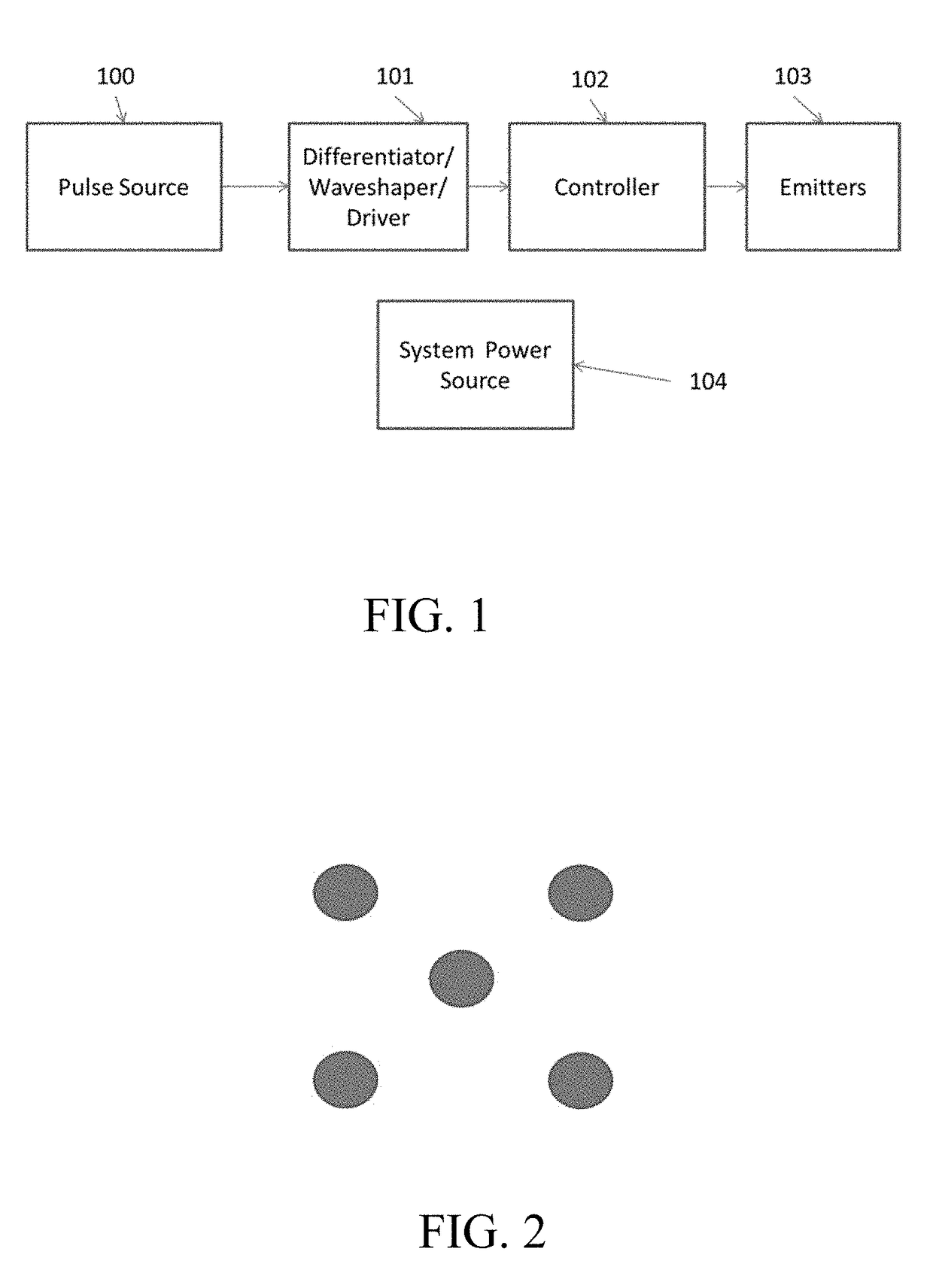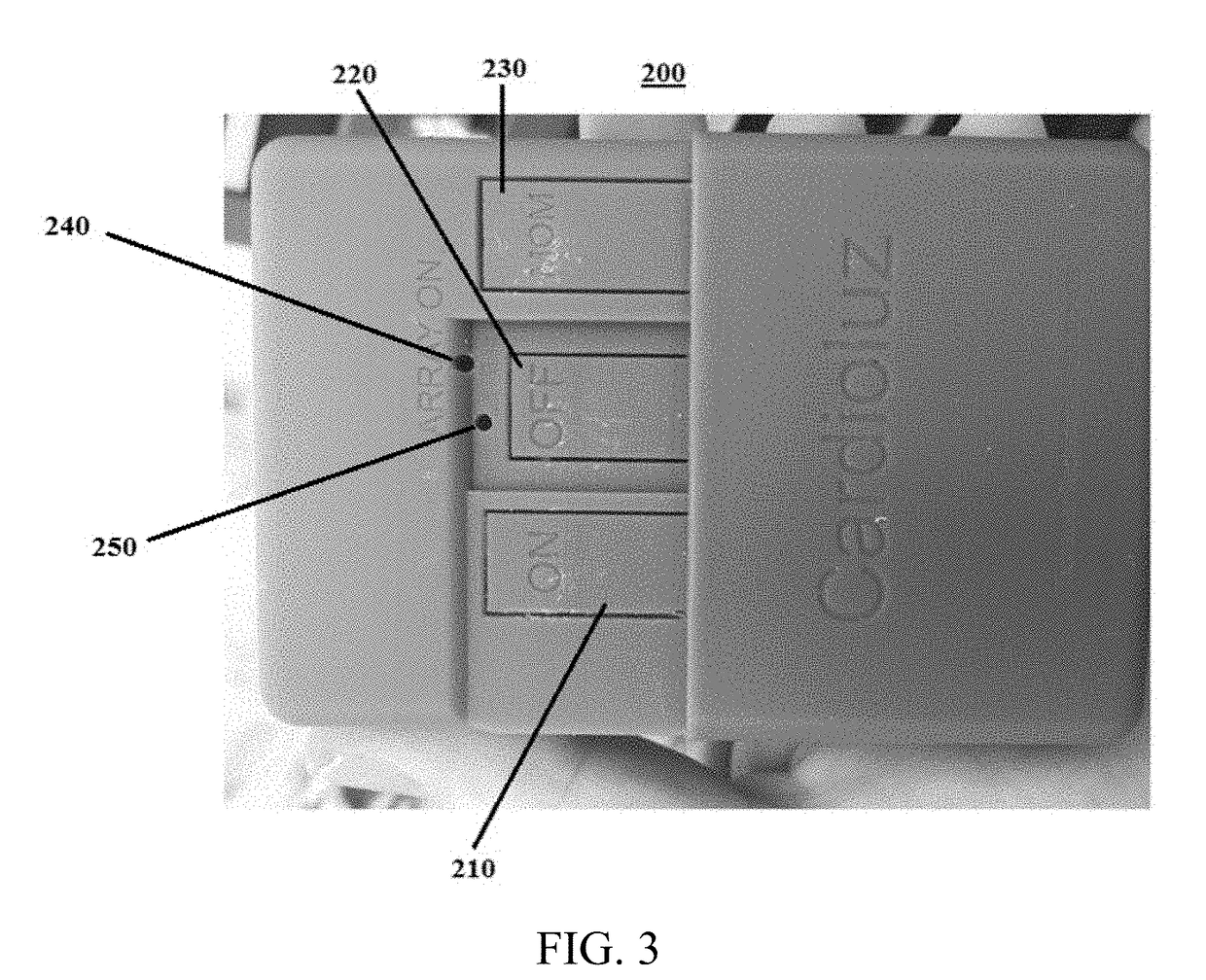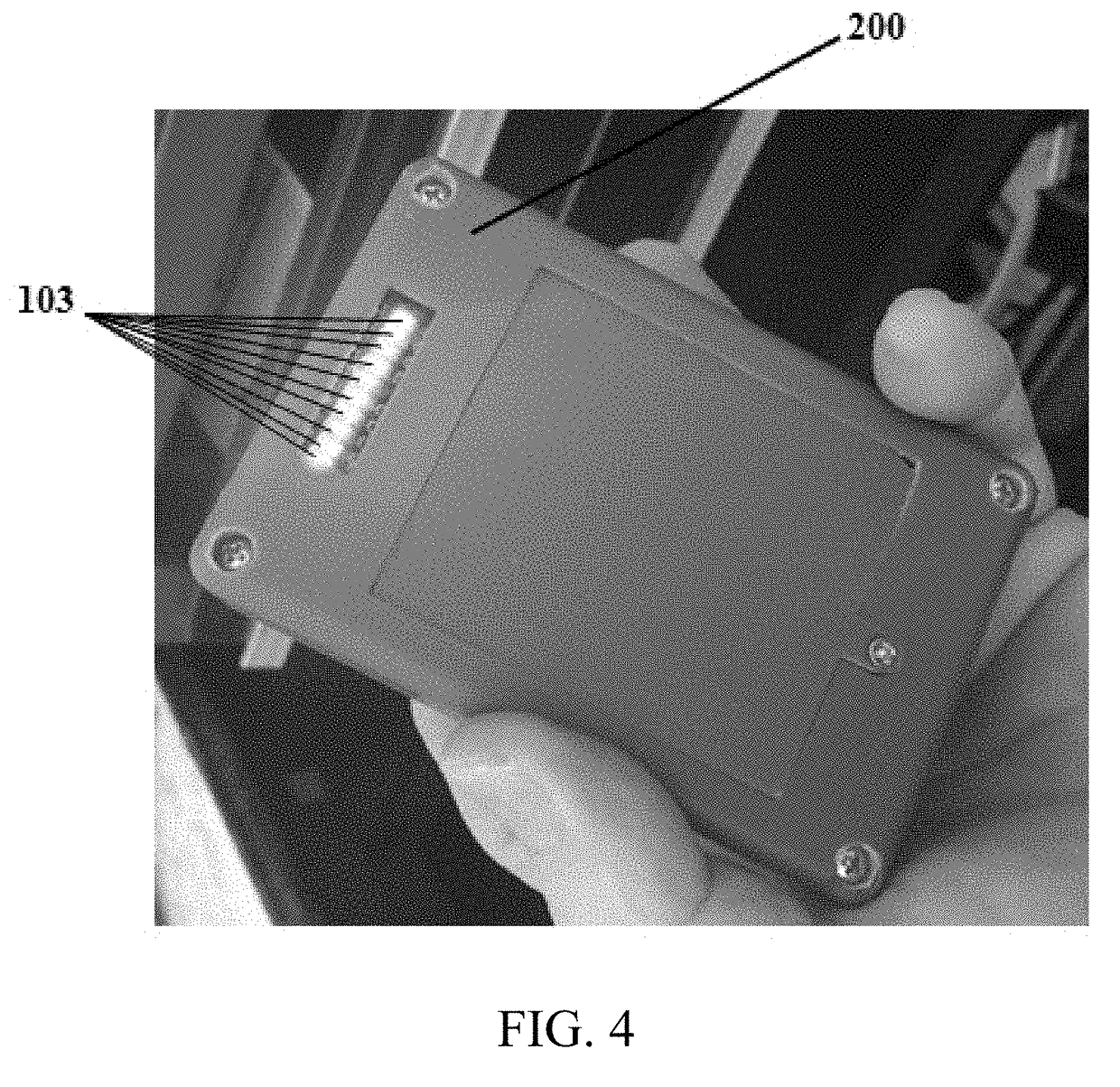Low-level laser light therapy devices, and methods of use
a laser light therapy and low-level technology, applied in the field of low-level laser light therapy devices, and methods of use, can solve the problems of signal processing decisions, design choices, signal processing decisions, electronic component requirements, and large power consumption, and achieve the effects of low power consumption, convenient use, and low cos
- Summary
- Abstract
- Description
- Claims
- Application Information
AI Technical Summary
Benefits of technology
Problems solved by technology
Method used
Image
Examples
example 1
tion Of Therapeutic Effects Of LLLLT On Facial Scarring
[0139]The healing rate of two closely located stitches has been observed. Referring to FIG. 5, the image of an upper stitch 310 and a lower stitch 320 can be seen above and below the right eye of a patient. LLLLT was directed to the lower stitch 320 for approximately three minutes per day for a period of one month beginning the day after surgery. Treatment on the upper stitch 310 was delayed for a period of six days and then applied equally with the lower stitch 320. LLLLT on the upper stitch 310 ended on the same day as the lower stitch 320.
[0140]FIGS. 5(a)-5(f) present images of the contrast in healing between the upper stitch 310 and the lower stitch 320 during the first six days after surgery. FIG. 5(a) presents an image of the upper stitch 310 and the lower stitch 320 one day after surgery. FIG. 5(b) presents an image of the upper stitch 310 and the lower stitch 320 two days after surgery. The lower stitch 320 appears to be...
example 2
tion Of Therapeutic Effects Of LLLLT On Eye Injury
[0142]A subject's right eye was injured due to exposure to a dose of ultraviolet UV light. The vision in the right eye got cloudy and the color perception between the right eye and the left eye differed. In addition the perceived size of objects seemed to differ between the two eyes.
[0143]The left eye was exposed to a red colored LED, with the eyelid closed. Visible red light could be seen through and illuminating the eyelid. With the exception of certain positions of the LED relative to the right eye, the right eye had difficulty in perception of the red light. The right eye was exposed to periodic exposures of light from a red colored LED. Improvements to the right eye were noted on a daily basis. Within six months, the right eye appeared to be 90% healed. After six months of daily exposures to the red colored LEDm the perception of the left eye and the right eye are almost identical.
PUM
 Login to View More
Login to View More Abstract
Description
Claims
Application Information
 Login to View More
Login to View More - R&D
- Intellectual Property
- Life Sciences
- Materials
- Tech Scout
- Unparalleled Data Quality
- Higher Quality Content
- 60% Fewer Hallucinations
Browse by: Latest US Patents, China's latest patents, Technical Efficacy Thesaurus, Application Domain, Technology Topic, Popular Technical Reports.
© 2025 PatSnap. All rights reserved.Legal|Privacy policy|Modern Slavery Act Transparency Statement|Sitemap|About US| Contact US: help@patsnap.com



